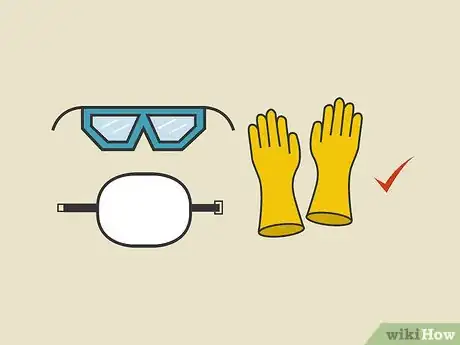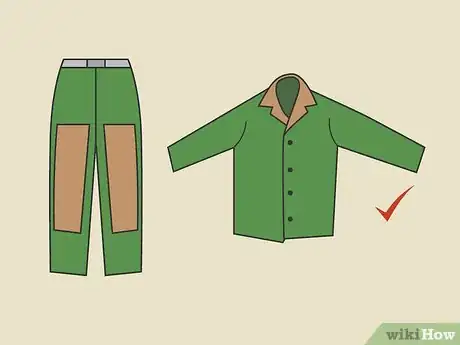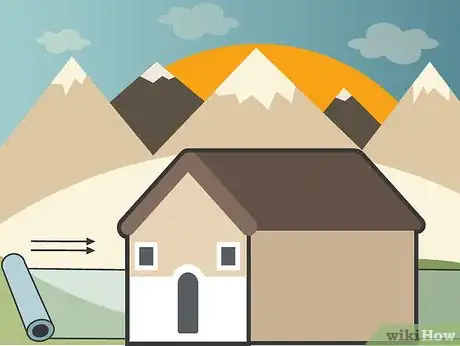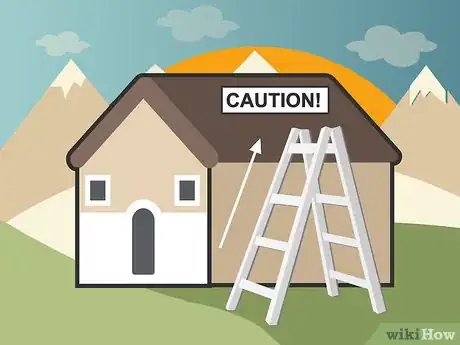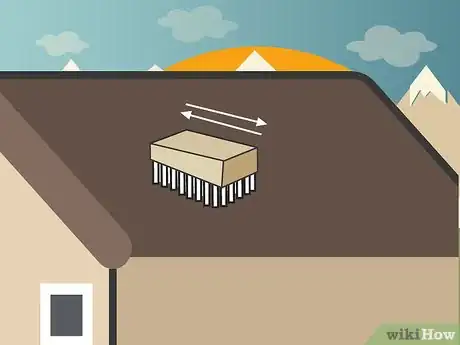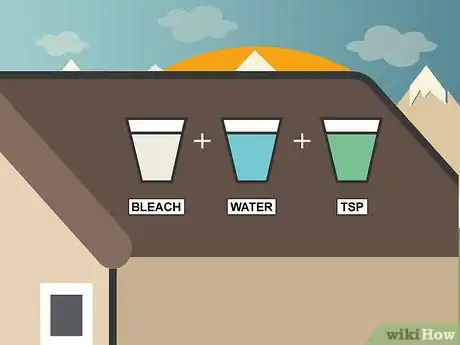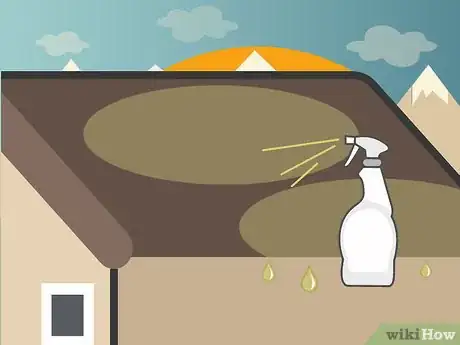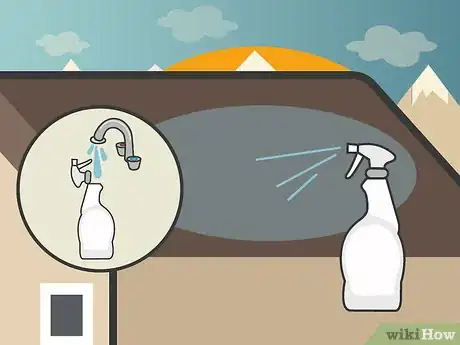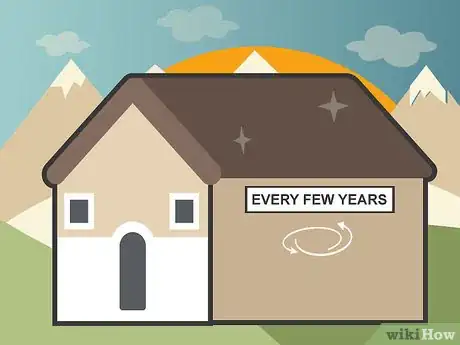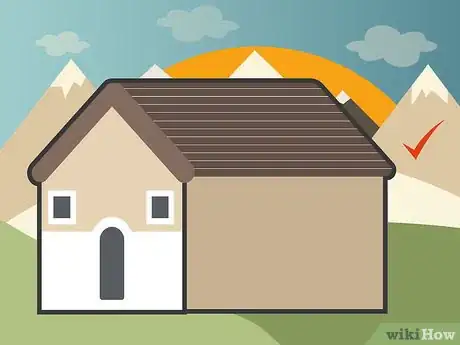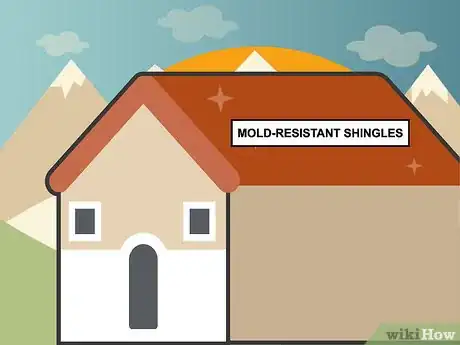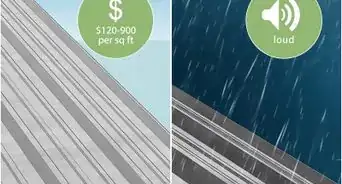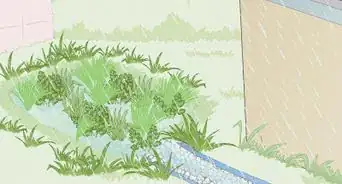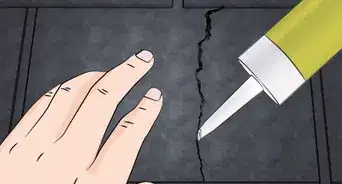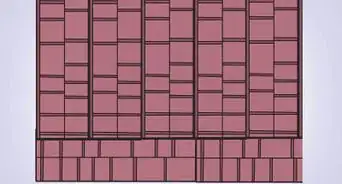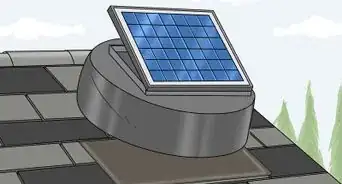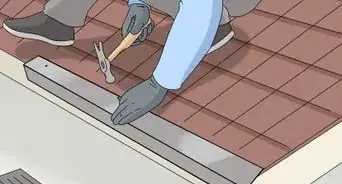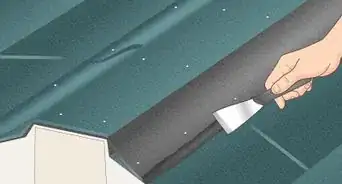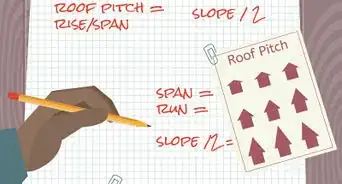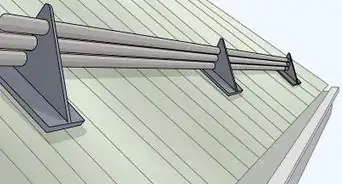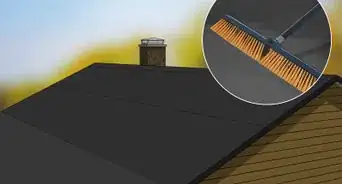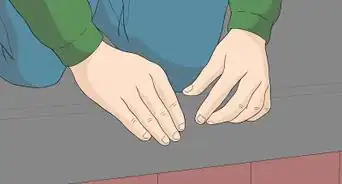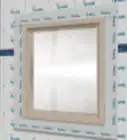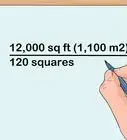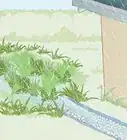This article was co-authored by Mike Kapur. Mike Kapur is a home inspector and the owner of Sonic Home Inspections, a home inspection company in Westchester, New York. With over 15 years of experience in pre-inspecting properties, Mike specializes in mold, radon, asbestos, lead, water, and air quality testing as well as hazardous materials, pest, infrared, and general home inspections. Prior to founding Sonic Home Inspections, Mike worked pre-inspecting apartments. Mike holds a BS in Accounting from Queens College and is a Certified Mold Assessor in the state of New York.
There are 17 references cited in this article, which can be found at the bottom of the page.
This article has been viewed 71,753 times.
It’s easy to let a mold problem sneak up on you on in out-of-the-way places like the roof of your home. Just because you can’t see it, however, doesn’t make it any less dangerous. At best, slimy black mold deposits are an eyesore; at worst they can pose serious health risks. That’s why if you find evidence of mold growing on the roof of your home, eliminating it right away should be a high priority. You can bust up stubborn mold, along with other types of growth like moss and algae, by spraying your roof down with a powerful chemical cleaner.
Steps
Working Safely
-
1Wear the proper safety gear. Before you begin, you’ll want to put on a pair of thick rubber gloves, a respirator or breathing mask, and some goggles or another form of eye protection. Without them, the chemicals you’ll be using to treat your roof shingles can irritate your eyes and airways.[1]
- For your own safety, put on all necessary safety equipment before you get on the roof and leave it on for the duration of the project.
-
2Dress appropriately for the job. Protective clothing, including pants and a long-sleeved shirt, will keep your skin from coming into contact with bleach and other harsh chemicals. A pair of slip-resistant work boots or shoes designed for outdoor use are also a must to ensure that you’ll have proper traction on the slippery, mold-covered shingles.[2]
- Walking around on the roof is precarious enough without the added danger of mold-covered shingles.
- It may be a good idea to change into an old set of clothes that you don’t mind dirtying up.
Advertisement -
3Cover or spray off nearby plants. Runoff from the chemicals can harm healthy vegetation. One way around this is to mist surrounding trees and shrubs with a garden hose to prevent the chemicals from sticking. If you don’t want to take any chances, you could also cover your prized flower bed or vegetable garden with a plastic tarp.[3]
- Wet your plants down twice—once before you begin cleaning the roof and again when you’re finished.
-
4Take the proper safety precautions when climbing onto the roof. Find a stable stretch of ground and position a sturdy ladder there. Make sure the spot you choose grants you direct access to the roof, with no awkward obstructions to get in the way. Climb each rung slowly, one at a time, until you can make your transition to the roof.[4]
- A solid surface like concrete will make the best base for your ladder, but a patch of grass and dirt is also okay as long as it's perfectly level.
- If possible, recruit a helper to hold the ladder while you’re on it.
- A safety harness can be a wise investment for big roofs that require more time and effort to clean.[5]
-
5Maneuver with caution. Angled rooftops can be steeper than they look. It will be crucial to watch your step at all times. Keep your eyes on your feet as you’re making your way around the roof, and avoid putting your full weight down until you’re confident that your footing is secure. If you’re not careful, the slightest miscalculation could result in a fall.[6]
- Don’t take any unnecessary risks, especially when stepping on and off the ladder.
- Stick closely to the ridge where the two sloped sides of the roof come together. This area will offer the greatest support.[7]
Spraying the Roof
-
1Scrub away the thickest buildup. Use a long-handled brush to scour the surface of the shingles and loosen stuck-on mold while it's dry and brittle. Focus your attention on the heaviest growth and hard-to-reach areas where the shingles overlap—the chemical treatment will take care of the rest.[8]
- Make sure you’re wearing your respirator during this phase to avoid breathing the mold particles that will be floating around.
-
2Mix up your cleaning solution. To get rid of mold and other types of growth for good, it’s best to use a powerful chemical agent like chlorine bleach.[9] You can whip up your own basic cleaner by combining one quart of bleach, one gallon of water, and ¼ cup (60ml) of trisodium phosphate (TSP). For maximum coverage, use a pump sprayer to disperse the solution.[10]
- The chlorine will kill the mold-causing bacteria while the TSP will help remove stains and discoloration.
- Never combine bleach with any product containing ammonia. This can produce toxic chlorine gas which can be extremely hazardous to breathe.[11]
- If you’d rather minimize your handling of chemicals, keep an eye out for preformulated treatments such as Wet & Forget or Moss Out at your local home improvement center.[12] You can also use Seventh Generation, which is 75% water and 25% chlorine-free bleach.[13]
-
3Spray the entire roof thoroughly. Start on lowest row of shingles and work your way backwards to the upper part of the roof. This will prevent the solution from draining in your direction. Continue spraying until you see runoff, then let the chemicals sit for 15-20 minutes to soak in and begin attacking the mold.[14]
- Though it may seem like common sense, using a pressure washer is not advisable. The force they generate is enough to damage delicate shingles.[15]
- The best time to clean your roof is during cool or cloudy conditions, when the solution won’t evaporate before it’s had a chance to be effective. Just make sure the forecast doesn't call for rain—a heavy downpour could wash away all your hard work.
-
4Rinse the shingles. Empty the sprayer and fill it back up with fresh water, or snake the garden hose around to where you are. Sweep the stream over every part of the roof that you just sprayed to wash away the concentrated chemicals. Any remaining traces will dry naturally in a few hours.[16]
- If not properly rinsed, chemicals like bleach and lye can cause permanent damage or discoloration.
Preventing Future Mold Growth
-
1Clean your roof every few years. Periodic treatments will prevent mold and other gunk from moving right back in. Following the initial cleaning, give your roof a checkup every six to eight months to see what kind of shape it’s in. Repeat the process as often as needed to fend off fresh growth.[17]
- Inspect your roof closely at the end of summer and following stretches of warm, rainy weather, when high levels of moisture can accelerate mold growth.[18]
- If you live in an area with an especially humid climate, you may need to give your shingles more frequent attention.
-
2Install strips of zinc or copper flashing. These metals have natural antimicrobial properties. When it rains, trace amounts will wash down the roof, keeping mold, moss, and algae at bay. You'll be able to tell a major difference in the condition of your roof in only a few short months.[19]
- These strips should be placed just under the uppermost row of shingles and span the entire length of the roof.
- To get an idea of how well metal stripping works, take a look at your chimney. Since most residential chimneys are outfitted with metal flashing, it’s rare to find any mold growing beneath them.[20]
-
3Switch to mold-resistant shingles. These types of shingles are actually constructed with zinc and copper additives that can stop mold from ever forming in the first place. Though they’re a slightly more expensive solution, they’re guaranteed to save you the trouble of recurrent cleanings.[21]
- Talk to your contractor or roofing expert about the cost of installing mold-resistant shingles.
- There’s no sense in replacing perfectly good roof shingles. To make sure you’re getting your money’s worth, hold off until the shingles you have in place begin to wear out.[22]
Warnings
- Should you happen to get chlorine bleach or other harsh chemicals in your eyes, nose, or mouth, splash cool water on the affected area and call Poison Control right away.⧼thumbs_response⧽
References
- ↑ https://www.todayshomeowner.com/remove-prevent-algae-stains-asphalt-shingle/
- ↑ https://www.nachi.org/home-depot-clean-algae-off-asphalt.htm
- ↑ https://www.nachi.org/home-depot-clean-algae-off-asphalt.htm
- ↑ https://www.bhg.com.au/roof-work-safety
- ↑ https://www.familyhandyman.com/tools/how-to-properly-use-a-roof-safety-harness/view-all/
- ↑ http://www.superpages.com/em/top-10-roofing-safety-tips/
- ↑ https://inspectapedia.com/roof/Walking_on_Roofs.php
- ↑ http://www.askthebuilder.com/removing-moss-and-algae-from-roofs/
- ↑ Mike Kapur. Certified Mold Assessor & Home Inspector. Expert Interview. 19 August 2020.
- ↑ https://www.todayshomeowner.com/remove-prevent-algae-stains-asphalt-shingle/
- ↑ http://www.doh.wa.gov/YouandYourFamily/HealthyHome/Contaminants/BleachMixingDangers
- ↑ https://www.naturalhandyman.com/iip/infxtra/infroo.html
- ↑ Susan Stocker. Cleaning Guru. Expert Interview. 8 November 2019.
- ↑ https://www.familyhandyman.com/roof/roof-repair/how-to-clean-roof-stains/view-all/
- ↑ https://www.naturalhandyman.com/iip/infxtra/infroo.html
- ↑ https://www.asphaltroofing.org/press-room/press-releases/algae-moss-prevention-and-cleaning-asphalt-roofing-systems
- ↑ https://www.angieslist.com/articles/why-black-streaks-moss-and-fungus-grow-roofs.htm
- ↑ https://www.asphaltroofing.org/press-room/press-releases/algae-moss-prevention-and-cleaning-asphalt-roofing-systems
- ↑ https://www.thisoldhouse.com/ask-toh/getting-algae-and-moss-roof
- ↑ https://www.todayshomeowner.com/remove-prevent-algae-stains-asphalt-shingle/
- ↑ https://household-tips.thefuntimesguide.com/roof_mold_roof_algae/
- ↑ https://www.thisoldhouse.com/ask-toh/getting-algae-and-moss-roof
- ↑ https://www.bobvila.com/articles/19-quick-tip-cleaning-your-gutters/
About This Article
To clean mold off a roof, start by putting on rubber gloves, a breathing mask, and goggles to protect yourself from the harsh cleaning chemicals. Then, use a long-handled brush to scour the surface of the shingles, and loosen stuck-on mold while it’s dry and brittle. Next, mix 1 quart of bleach, 1 gallon of water, and ¼ cup of trisodium phosphate to make a cleaning solution. After that, spray the solution on your roof, let it sit for 15-20 minutes, then scrub off the mold. Finally, rinse your shingles with water to wash away the chemicals. For more tips, like how to prevent mold from growing on your roof, keep reading!
